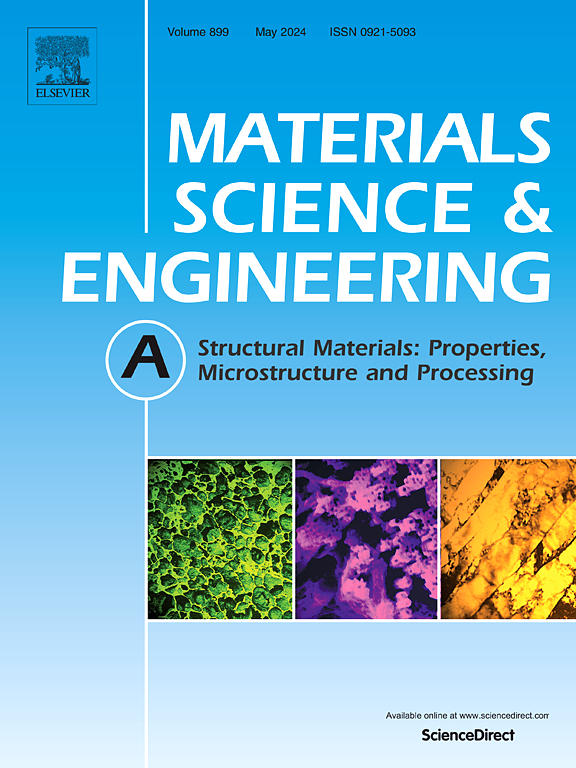α-铀在高应变率压缩下的孪晶和扭结行为
IF 6.1
2区 材料科学
Q1 MATERIALS SCIENCE, MULTIDISCIPLINARY
引用次数: 0
摘要
铀及其合金在核工业应用过程中经常受到动态变形的影响。α-U(铀的同素异形体,稳定温度可达940 K)由于其低对称晶体结构,孪晶和扭结对其动态塑性变形起关键作用。然而,α-U在动态变形作用下的孪晶和扭结行为尚不完全清楚。在这项工作中,我们采用分离式霍普金森压力棒(SHPB)动态压缩粗粒度α-U至5%,15%,25%和27%的应变。利用电子背散射衍射(EBSD)对所得到的孪带和扭结带进行了表征。结果表明,孪晶的宽度和密度随冲击应变的增大而增大。确定了四种类型的双胞胎:{130}、{17 2}、{112}和}{17 6}。15%冲击应变后出现扭结带,其边界垂直于基体[100]方向,[100]方向与基体成45°角。在扭结带内观察到{130},{17}2}和{112}的双胞胎,并且发现扭结带内的{112}双胞胎引发次级{130}双胞胎。在α-U绝热剪切带内观察到细小且随机取向的晶粒。基于这些发现,我们提出了双诱导旋转动态再结晶来描述铀中绝热剪切带的形成。该研究为铀在动载荷作用下的塑性变形机制提供了新的认识。本文章由计算机程序翻译,如有差异,请以英文原文为准。
Twinning and kinking behaviors of α-uranium under high strain rate compression
Uranium (U) and its alloys are frequently subjected to dynamic deformation during their applications in nuclear industry. Owning to the low-symmetry crystal structure of α-U (the allotropic form of uranium stable up to 940 K), twinning and kinking play critical roles in its dynamic plastic deformation. However, the twinning and kinking behaviors of α-U under dynamic deformation have not yet been fully understood. In this work, we employed a split Hopkinson pressure bar (SHPB) to dynamically compress coarse-grained α-U to strains of 5%, 15%, 25%, and 27%. The resulting twin and kink bands were characterized using electron back-scatter diffraction (EBSD). Our results reveal that both the width and density of twins increase with increasing impact strain. Four types of twins were identified: {130}, , {112}, and . Kink bands emerged after 15% impact strain, with their boundaries perpendicular to the [100] direction of matrix and their [100] directions oriented at a 45° angle relative to that of matrix. The {130}, , and {112} twins were observed within the kink bands, and the {112} twins inside the kink bands were found to initiate secondary {130} twin. Fine and randomly oriented grains were observed inside the adiabatic shear bands of α-U. Based on these findings, we propose a twin-induced rotational dynamic recrystallization to describe the formation of adiabatic shear band in uranium. This study provides new insights into the plastic deformation mechanisms of uranium under dynamic loading.
求助全文
通过发布文献求助,成功后即可免费获取论文全文。
去求助
来源期刊

Materials Science and Engineering: A
工程技术-材料科学:综合
CiteScore
11.50
自引率
15.60%
发文量
1811
审稿时长
31 days
期刊介绍:
Materials Science and Engineering A provides an international medium for the publication of theoretical and experimental studies related to the load-bearing capacity of materials as influenced by their basic properties, processing history, microstructure and operating environment. Appropriate submissions to Materials Science and Engineering A should include scientific and/or engineering factors which affect the microstructure - strength relationships of materials and report the changes to mechanical behavior.
 求助内容:
求助内容: 应助结果提醒方式:
应助结果提醒方式:


